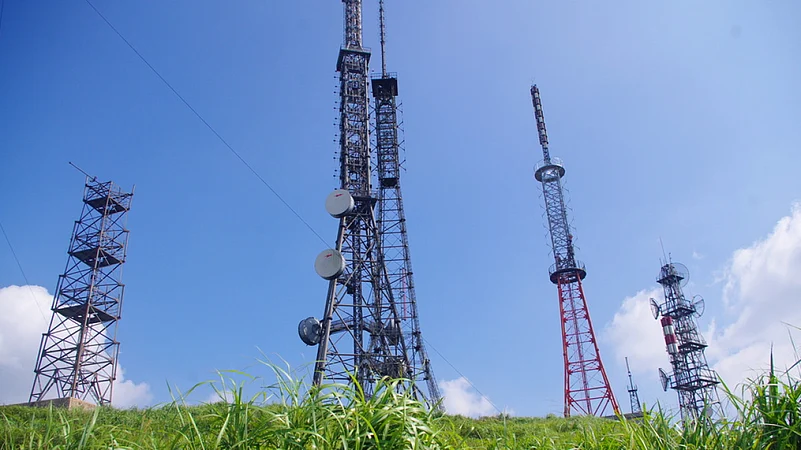With over a billion subscribers, India is the world’s second-largest telecom market. The sector draws in around 6.5 per cent of India’s overall foreign direct investments (FDIs). The rapid rollout of 5G services has made the industry even more lucrative. Telecom is estimated to contribute nearly $500 billion to the economy between 2023 and 2040. But to make the most of this opportunity, India must create and provide industry-ready talent. And that is a problem, at least for now.
For Priyanka Anand, vice president and head of human resources for Southeast Asia, Oceania and India at telecom equipment-maker Ericsson, there is an urgent need to bridge the talent gap in telecom. Headquartered in Sweden, Ericsson has around 25,000 Indian employees. In an interview with Outlook Business, Anand talks about how India can tap opportunities in the telecom sector.
(Edited excerpts)
How do you see the projections around the talent gap in telecom?
The telecom talent gap has been a significant concern over the years. We need to work with industry, academia and other stakeholders to find ways to close this gap. It is going to be insurmountable unless we do things differently. Technology shifts are not new to telecom. We have seen the evolution of 2G to 5G in a decade. Every technological shift calls for new learnings. That also creates demand for newer roles.
We now see roles requiring expertise in network engineering and artificial intelligence (AI). Cloud specialists are also in high demand. Cybersecurity is the next big thing. Data scientists are becoming crucial. We need to start building these competence pools so that we can innovate and drive the industry’s evolution.
How does Indian talent hold up against global peers?
Every country has its own niche, and it is well known that Indian talent has real strengths to bring to the table. Indian professionals are highly skilled, adaptable, tech savvy and exhibit the can-do attitude that comes with a strong educational background. Indian professionals are proficient in English, which makes them globally competitive.
In white-collar roles, Indian talent is excelling be it in information technology (IT), engineering, management. In blue-collar jobs, Indian workers are quick to learn and adapt to varied industries. We need to continue building these technical, soft and language skills and keep developing leadership qualities.
We must make sure we are leveraging the Indian talent and make sure we find good talent sitting anywhere in the world and bring them here to create learning opportunities for the talent in India. Cross-skilling is critical. We do not want to do everything ourselves. When we find people with the right competencies in other parts of the world, we bring them here to teach our people in India.
Is the telecom industry bringing global talent to India now?
Absolutely. Our talent rotates across the globe, and we are attracting talent to come work in India. For example, for 5G rollout and deployment. There were countries that had rolled out 5G before us. So, when we were on this accelerated path of deploying 5G in the country, we got experienced talent from other parts of the world to India. They did not just help accelerate the rollout but also helped upskill the talent here. This helped us create a large talent pool very quickly.
Within India, are there states that are better than others in terms of telecom talent, a pattern observed in the IT sector?
Some states do have a better concentration of opportunities, companies and universities. But apart from that, organisations are now expanding their talent strategy to reach tier-II and tier-III cities. To me, what sits in tier-I cities is not all local talent. There is talent moving from across [the region]. So, it is difficult to say which state or city will get you better talent.
How is the telecom industry responding to the rise of AI?
We are leveraging AI-driven solutions for network management, customer service, network security and making sure we are interpreting the huge amount of data that gets generated by telecom networks and making it meaningful. When we interpret them, we make it consumable for our customers and service providers. When automation starts needing a lower amount of manual intervention, better quality comes through. It takes away the tactical and transactional aspects of the role so that they can focus on the value-added parts of the process.
Ericsson is pairing down research-and-development (R&D) positions in some geographies. Will that lead to expansion of such roles in India?
Absolutely. We expect to see an increase [in hiring] in our R&D teams across geographies, including in India. This is going to be a global phenomenon. If you look at the rapid advancements in telecom, especially with 5G and AI, investing in R&D is going to be a game-changer. It is crucial, foundational and fundamental. If we do not do it, it is going to create unprecedented risks.
India is increasingly becoming an attractive destination for multinational companies to expand their R&D operations. We [Indians] are no longer doing the low-end bottom-of-the-pyramid tactical and transactional jobs. We are bringing a lot of cerebral competence.
At Ericsson, we have over 2,000 R&D engineers across India, some of whom work at our Global Artificial Intelligence Accelerator (GAIA). GAIA is an organisation we set up in Bengaluru in 2019. This is one of three GAIA centres in the world, and it leverages cutting-edge technology. So yes, there will be a big intake in R&D and huge investments are needed. That is the only way we can stay ahead of the curve.

























